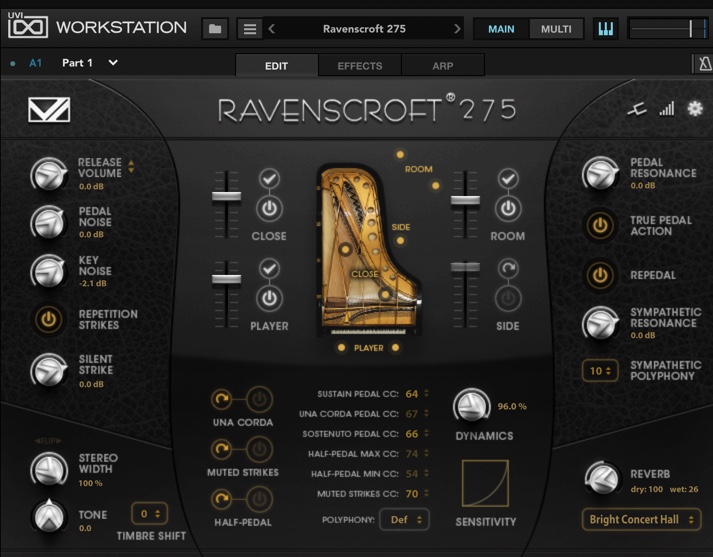Hi @scott1 and thanks for keeping this going.
I’ve been really happy with Ravenscroft + Logic, so much so that it’s all that I use now for everything–practice, playing, and recording (obviously). What I like about practicing and playing with this setup as opposed to Ravenscroft by itself is the ability to use the Logic metronome for practice, the ability to add an additional layered VST from Logic, and the ability to record ideas on the fly–it’s especially helpful when I’m working on an arrangement, since sometimes I’ll play 4 bars that I like but then while figuring out the next 4 bars I forget what I played previously!
But I don’t think there are any settings for Ravenscroft in Logic that wouldn’t apply to Ravenscroft by itself. I’m attaching a few screenshots that show my main template and here’s what’s different from default:
- Mikes are 100% “Close” + ~ 30% “Player” (Ravenscroft);
- Pull down the velocity a little bit (Ravenscroft);
- Turn off pedal noise (Ravenscroft);
- Add Channel EQ with Grand piano 1 default (Logic);
#2 and #4 will obviously depend on idiosyncracies of your keyboard, touch, and speaker setup. Speaking of which, my setup is extremely sensitive to monitor placement and room acoustics; for quite some time I thought the sound from my setup was way too harsh, but I eventually realized it was all because the monitors were too close to the wall behind them. So–I would suggest that you “tune” your sound first using high quality headphones to get it exactly the way you like it, and then try and mimic that with monitors/speakers by varying placement and/or EQ.
I looked through Hayden’s template and he has pretty close to default settings on the Ravenscroft, and the only thing he adds is a compressor that is most important when you bounce, i.e. record a project. But I haven’t done anything special to bounce, I just use the default Logic settings and it comes out OK. Everything I’ve posted here has been recorded that way.
I’ll be interested to hear about any other experience/opinions/feedback.



 .
.


